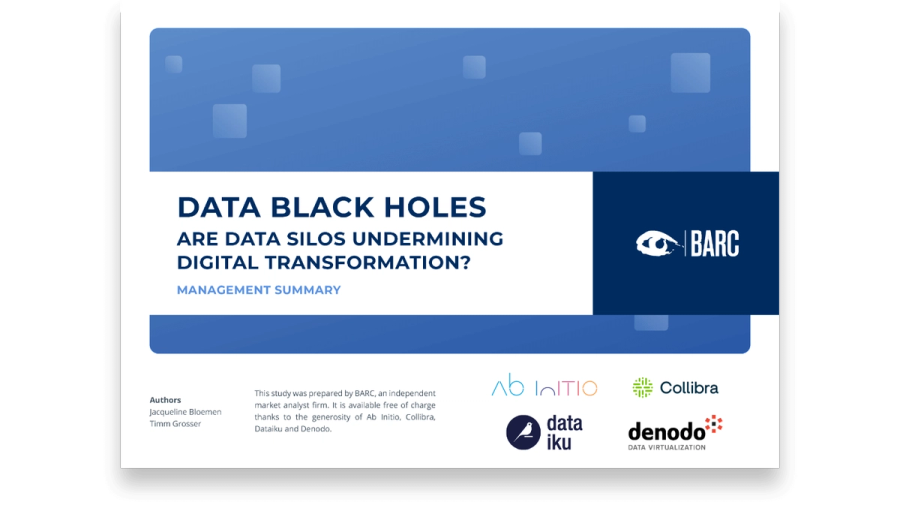Data Black Holes: Are data silos undermining digital transformation?

BARC surveyed participants from around the world to learn what data intelligent companies are doing to overcome their data silos. Below are some of the recommendations:
- Create transparency around decentralized data processes
- Make digital transformation a primary business initiative for the entire organization
- Plan a logical architecture that ensures combinability of physically distributed data
- Implement a common data language in order to make data accessible across the organization
Read this BARC report to learn more about the challenges that organizations face with data silos and the ways in which organizations can overcome their existing black holes.